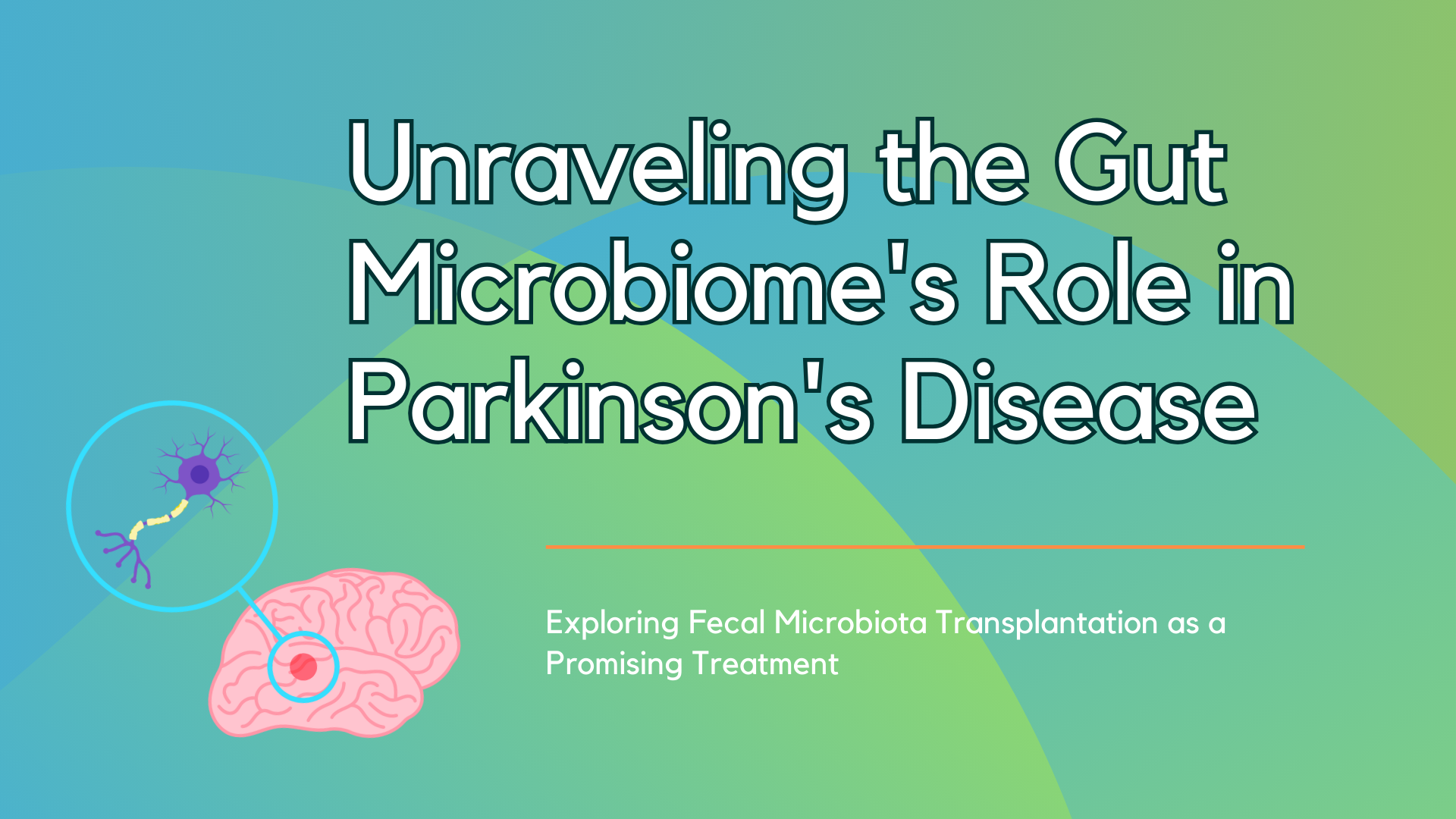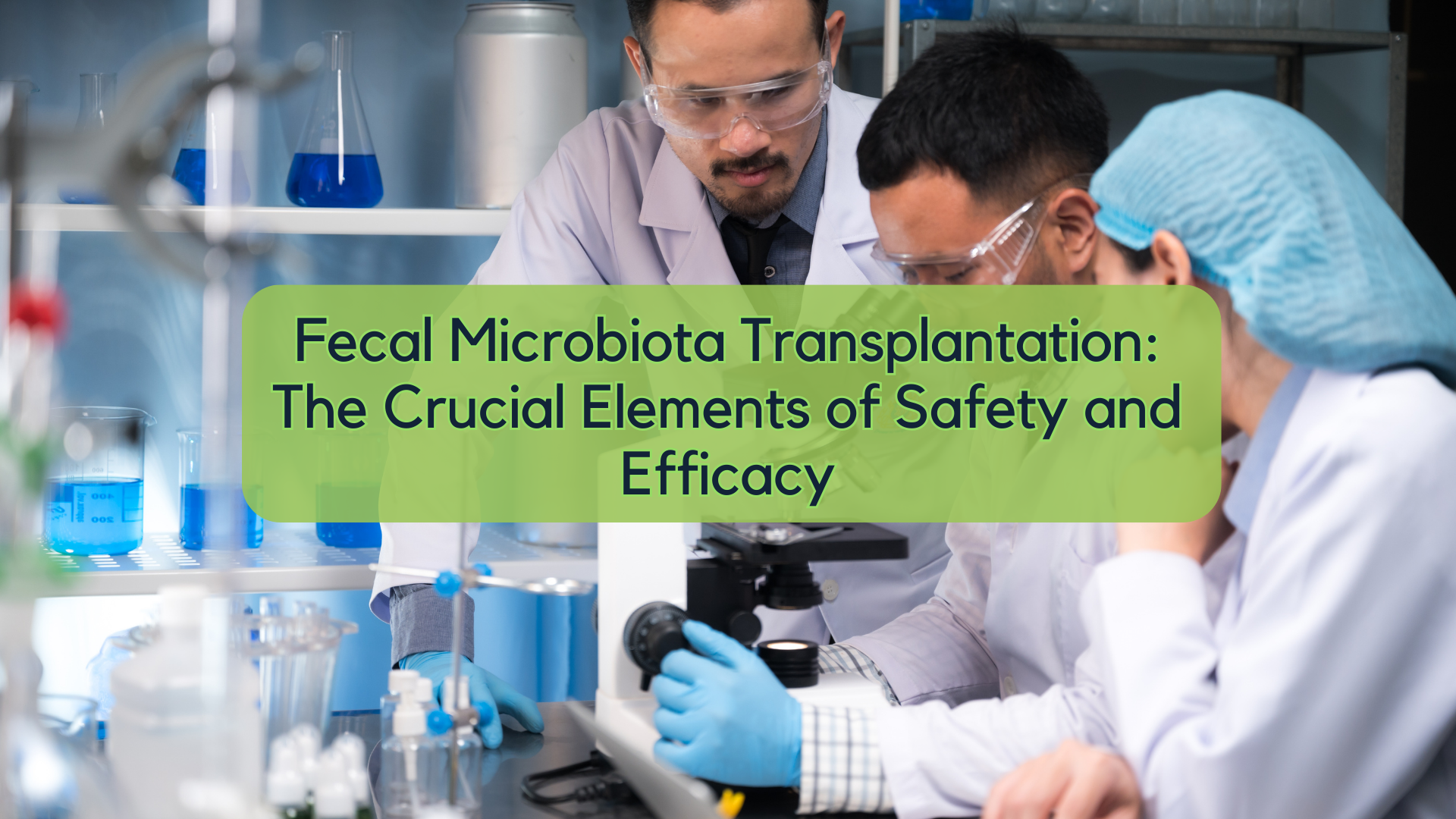In recent years, researchers have been uncovering compelling evidence that suggests a link between the gut and brain health. The gut-brain axis acts as a highway to connect the gut microbiome and the brain, playing a role in regulating normal brain functions and may be involved in a number of neuropathological conditions, including Parkinson’s disease 1,2. In this blog, let’s review what we currently know about the role of the gut microbiome in Parkinson's disease and explore the potential of fecal microbiota transplantation (FMT) as an innovative treatment approach.
Understanding the Gut-Brain Connection in Neurological Conditions
The gut microbiome may influence not only the gut but also normal brain function through the gut-brain axis 1. The gut-brain axis is a complex two-way communication pathway between the brain and the gut microbiome, and it is assumed to involve many different pathways, including immune, neural, endocrine, and metabolic pathways 3–13. Research has shown that dysfunction within the gut-brain axis can have serious negative consequences for brain function both from neurologic and mental health perspectives 5,10,14.
While there is a need for more randomized clinical trials to fully understand the possible causal role the gut microbiome may play in different conditions, there is accumulating evidence from both animal and clinical studies implicating the gut-brain axis in a variety of disorders within the central nervous system 4,10,15 such as:
- Neurodegenerative disorders (including multiple sclerosis (MS), Alzheimer’s (AD) and Parkinson’s (PD) diseases) 16–29,29–32
- Neuropsychiatric disorders (including major depressive and mood disorders) 33–40
- Neurodevelopmental disorders (such as autism spectrum disorder (ASD)) 8,41–44
The Gut Microbiome in Parkinson's Disease
Numerous studies have demonstrated a strong association between gut dysfunction and Parkinson's disease (PD), with differences in gut microbiota composition in patients with PD a common finding 20,21,25,30,31,45–51. Recent research has revealed that alterations in the gut microbiome and colonic inflammation can be associated with the predisposition and progression of Parkinson’s disease (PD) 52,53. Actually, colonic inflammation is identified in over 80% of PD cases and precedes the motor symptoms even by several years 54.
The Future of FMT as a Treatment for Parkinson's Disease
FMT is an emerging therapeutic technique involving the transfer of specially prepared stool material from a healthy donor into the gastrointestinal tract of a recipient 55–58. FMT helps re-educate the gut microbiome to restore a diverse and balanced gut microbiome and potentially alleviate disease symptoms 59–61.
As research continues to explore the mechanisms by which the gut microbiome influences Parkinson's disease, the potential of FMT as a therapeutic intervention has become an area of clinical exploration. While research on FMT as a potential treatment for Parkinson's disease is still in its early stages, the preliminary findings are encouraging, showing improvements in both motor and on-motor PD symptoms 62–65. A recent 2023, placebo-controlled clinical study found that oral FMT capsules were well tolerated and increased the diversity of the microbiome, reduced constipation and improved subjective motor and non-motor PD symptoms 62.
Conclusion
As our understanding of the gut-brain connection grows, we are discovering exciting avenues for potential therapeutic approaches in Parkinson's disease. The gut microbiome and fecal microbiota transplantation offer new insights and innovative possibilities for future treatments. However, it is crucial to note that FMT is not yet an approved therapy for Parkinson's disease, and further studies are needed to establish its safety, efficacy, and long-term effects.
At Novel Biome, we're passionate about the importance of the gut microbiome and the transformative potential of Fecal Microbiota Transplantation (FMT) treatment to restore health. As an FMT contract manufacturer, we leverage our years of experience in FMT to manufacture high-quality FMT products utilizing our highly-screened donors and stringent manufacturing standards. If you are interested in learning more about our FMT products and manufacturing capabilities, please contact us HERE or to register as a clinical partner to order FMT products, click HERE.
References: 1. Deidda, G. & Biazzo, M. 2021, 2. Ma, B. et al. 2019, 3. Chen, X. et al. 2013, 4. Cryan, J. F. et al. 2019, 5. Dinan, T. G. & Cryan, J. F. 2017, 6. Ding, X. et al. 2020, 7. Jendraszak, M. et al. 2021, 8. Liu, Z. et al. 2021, 9. Rhee, S. H. et al. 2009, 10. Rutsch, A. et al. 2020, 11. Skonieczna-Żydecka, K. et al. 2018, 12. Sudo, N. et al. 2004, 13. Wan, Y. et al. 2021, 14. Cataldi, S. et al. 2022, 15. Serra, D., 2019, 16. Bedarf, J. R. et al. 2017, 17. Berer, K. et al. 2017, 18. Biedermann, L. et al. 2013, 19. Friedland, R. P. 2015, 20. Hasegawa, S. et al. 2015, 21. Hill-Burns, E. M. et al. 2017, 22. Houser, M. C. & Tansey, M. G. 2017, 23. Itzhaki, R. F. et al. 2016, 24. Jiang, C., Li, G. et al. 2017, 25. Keshavarzian, A. et al. 2015, 26. MahmoudianDehkordi, S. et al. 2019, 27. Moos, W. H. et al. 2016, 28. Pisa, D. et al. 2018, 29. Sampson, T. R. et al. 2016, 30. Scheperjans, F. et al. 2015, 31. Unger, M. M. et al. 2016, 32. Zhao, Y. et al. 2015, 33. Clapp, M. et al. 2017, 34. Dinan, T. G. & Cryan, J. F. 2017, 35. Foster, J. A. & McVey Neufeld, K.-A. 2013, 36. Iannone, L. F. et al. 2019, 37. Kelly, J. R. et al. 2015, 38. Luna, R. A. & Foster, J. A. 2015, 39. Valles-Colomer, M. et al. 2019, 40. Zheng, P. et al. 2019, 41. Cenit, M. C. et al. 2017, 42. Hughes, H. K. et al. 2018, 43. Sharon, G. et al. 2019, 44. Tognini, P. 2017, 45. Heintz-Buschart, A. et al. 2018, 46. Hopfner, F. et al. 2017, 47. Li, W. et al. 2017, 48. Lin, A. et al. 2018, 49. Petrov, V. A. et al. 2017, 50. Qian, Y. et al. 2018, 51. Yang, H. et al. 2022, 52. Romano, S. et al. 2021, 53. Zapała, B. et al. 2021, 54. Caputi, V. & Giron, M. 2018, 55. Choi, H. H. & Cho, Y.-S. 2016, 56. Gupta, S. et al. 2021, 57. Ser, H.-L. et al. 2021, 58. Xu, M.-Q. 2015, 59. Khanna, S. et al. 2017, 60. Song, Y. et al. 2013, 61. Wilson, B. C. et al. 2019, 62. DuPont, H. L. et al. 2023, 63. Guseo A. 2012, 64. Huang, H. et al. 2019, 65. Segal, A. et al 2021.


 By: Dr. Shaina Cahill, Ph.D. (Director Of Operations and Medical Affairs)
By: Dr. Shaina Cahill, Ph.D. (Director Of Operations and Medical Affairs)





